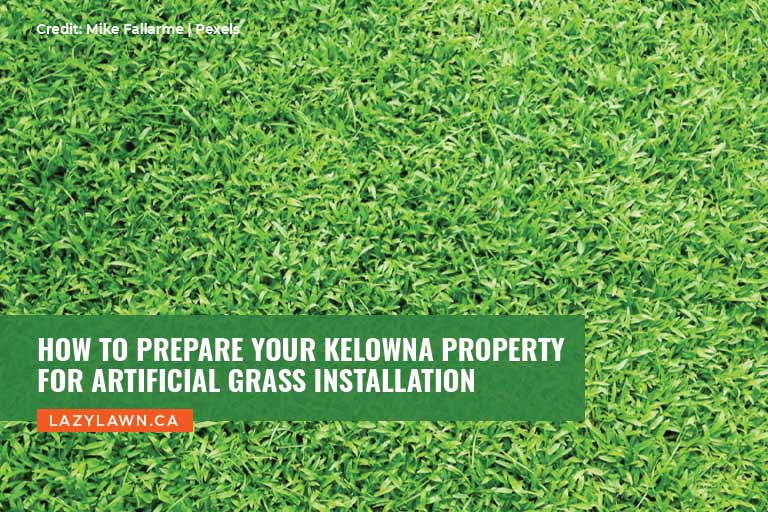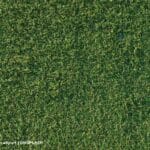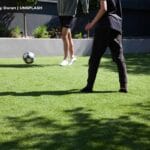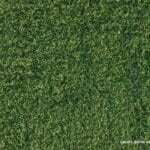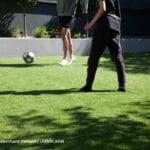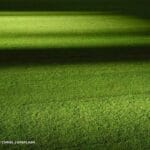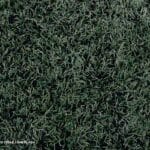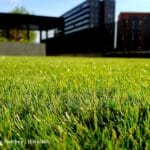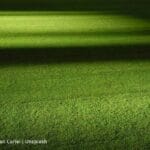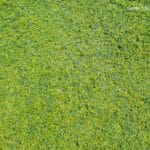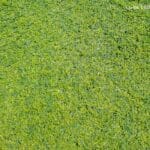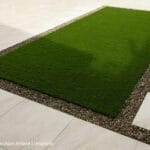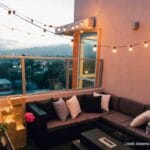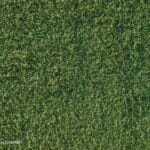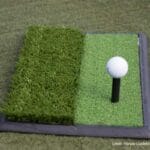Installing artificial grass in Kelowna offers a practical solution to the challenges of maintaining a lush, green lawn throughout the year. With the dry summers and unpredictable weather patterns in the Okanagan Valley, artificial grass provides an aesthetically pleasing and low-maintenance alternative to natural grass. However, one key rule to successful installation of your synthetic turf is ensuring you’ve prepared properly. Here’s a comprehensive guide to help you prepare your Kelowna property for artificial grass installation.
1. Assessing Your Property
Begin by evaluating the area where you plan to install the artificial grass. Consider factors such as the size and shape of the space, existing landscaping features, and potential drainage issues. A thorough assessment will help you determine the amount of artificial grass needed and identify any obstacles that may require attention.
2. Gathering Necessary Tools and Materials
Before starting the preparation, gather all the tools and materials required for the project. You will need:
– Shovel
– Rake
– Wheelbarrow
– Measuring tape
– Utility knife
– Tamper or plate compactor
– Weed barrier fabric
– Base material (such as crushed rock or gravel)
– Sand
– Adhesive and joining tape (if required)
Having these items ready will ensure a smooth workflow and prevent unnecessary delays.
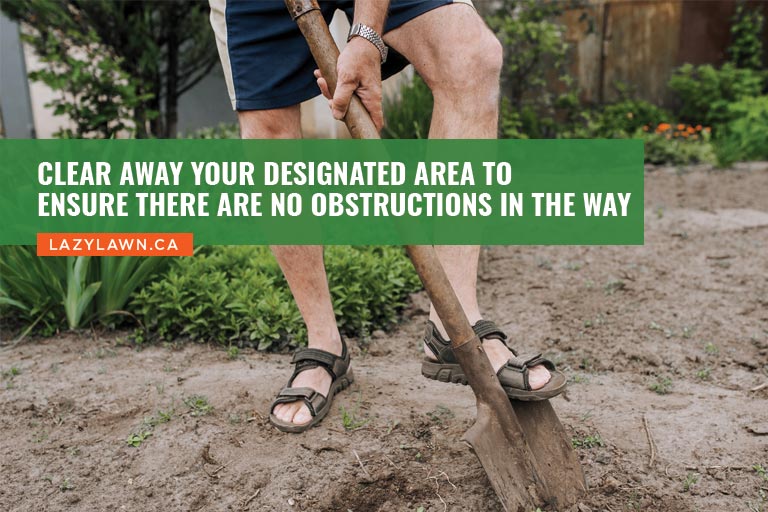
3. Clearing the Area
Remove any existing grass, weeds, rocks, and debris from the designated area. Use a shovel and rake to clear the surface, ensuring it is free from any obstructions. If there are any plants or shrubs that you wish to keep, carefully transplant them to another location. Clearing the area thoroughly will create a clean slate for the installation process.
4. Ensuring Proper Drainage
Adequate drainage is crucial to prevent water accumulation and potential damage to your artificial grass. Evaluate the natural slope of your property and ensure it directs water away from the installation area. If necessary, consider installing a drainage system, such as French drains or perforated pipes, to facilitate proper water flow. Proper drainage will enhance the longevity and performance of your artificial grass. Alternatively, you can also store some of the runoff from rain to provide water for your natural plants, giving you an additional source of water when you need it.
5. Creating a Solid Base
A solid base is essential for the stability and durability of your artificial grass. Start by laying a weed barrier fabric to prevent weed growth beneath the grass. Next, spread a layer of base material, such as crushed rock or gravel, over the entire area. The base layer should be approximately 5 to 10 centimetres thick, depending on the soil conditions and expected foot traffic.
Use a tamper or plate compactor to compact the base material thoroughly. This step is crucial to prevent settling and ensure a smooth, even surface. Compact the base in several passes, adding more material as needed until you achieve the desired thickness and stability.
6. Levelling the Surface
After compacting the base material, use a rake to level the surface. Ensure the area is even and free from any bumps or depressions. A level surface will provide a smooth and professional finish for your artificial grass. Take your time during this step, as any irregularities will be visible once the grass is installed.
7. Adding a Layer of Sand
To further enhance the stability and appearance of your artificial grass, add a layer of sand on top of the compacted base. The sand layer should be approximately 1 to 2 centimetres thick. Spread the sand evenly using a rake, and then use a tamper or plate compactor to compact it. The sand will provide a cushioning effect and help the grass blades stand upright, creating a more natural look.
8. Measuring and Cutting the Grass
Measure the area where you will install the artificial grass to determine the required dimensions. Roll out the grass and use a utility knife to cut it to the appropriate size and shape. Be precise with your measurements and cuts to avoid gaps or overlaps. It’s better to cut the grass slightly larger than needed, as you can trim the excess later.
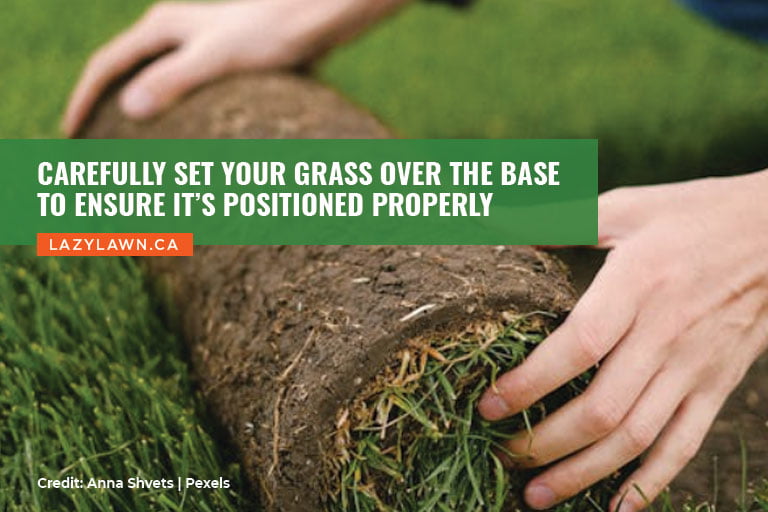
9. Placing the Grass
Carefully position the cut pieces of artificial grass over the prepared base. Ensure the grass fibres are all facing the same direction for a uniform appearance. If you need to join multiple pieces, use adhesive and joining tape to secure the seams. Press the seams firmly to ensure a strong bond. Take your time during this step to ensure the grass is laid out smoothly and evenly.
10. Securing the Grass
Once the grass is in place, secure the edges using landscape stakes or nails. Space the stakes approximately 15 to 20 centimetres apart around the perimeter to prevent the grass from shifting. For added stability, you can also secure the seams with landscape staples. Make sure the grass is tightly secured to the base to prevent any movement.
11. Adding Infill
Infill is an important component of artificial grass installation, as it provides stability, support, and a natural feel. Spread a layer of infill material, such as silica sand or rubber granules, over the grass. Use a broom or power brush to work the infill into the grass fibres, ensuring even distribution. The infill helps the grass blades stand upright and provides a cushioning effect underfoot.
12. Brushing and Fluffing the Grass
After adding the infill, use a stiff-bristled broom or power brush to brush the grass fibres upright. This step will enhance the appearance of your artificial grass, making it look more natural and lush. Regular brushing and fluffing will also help maintain the integrity of the grass over time.
13. Final Inspection
The last step to installing your artificial turf is conducting a final inspection to ensure everything is in place and properly secured. Check for any loose edges, seams, or areas that may require additional infill. Make any necessary adjustments to achieve a flawless finish. A thorough inspection will ensure your artificial grass installation is of the highest quality.
14. Maintenance Tips
While artificial grass requires minimal maintenance, regular care will extend its lifespan and keep it looking its best. Remove debris, such as leaves and twigs, regularly to prevent them from accumulating on the surface. Rinse the grass with water occasionally to remove dust and dirt. If you have pets, promptly clean up any waste and rinse the area to maintain hygiene.
Investing in artificial turf isn’t something limited to public parks and sports fields, it can also happen at home. Preparing your Kelowna property for artificial grass installation involves several crucial steps to ensure a successful and long-lasting result. By assessing your property, clearing the area, ensuring proper drainage, and creating a solid base, you lay the groundwork for a smooth installation process. Careful placement, securing, and adding infill will enhance the appearance and performance of your artificial grass. With proper preparation and maintenance, your artificial lawn will provide a beautiful and low-maintenance solution for years to come.
When it comes to finding the right artificial turf for your home, Lazy Lawn has you covered. We offer a wide range of synthetic turf options to suit your lawn’s appearance and boost your curb appeal. Our synthetic turf looks and feels like natural grass, and doesn’t add to your water costs while it’s at it. Give us a call now at (888) 622-5296 to invest in high-quality, low-maintenance synthetic grass for your property.

